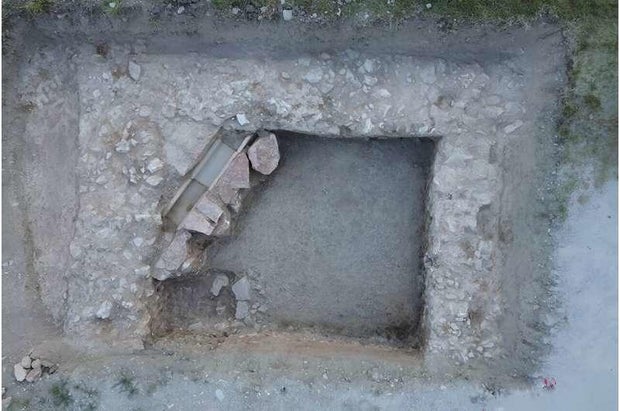A letter written by a Roman emperor helped lead a team of archaeologists to an ancient temple that “adds significant insights into the social changes” from pagan beliefs to Christianity in the Roman Empire, experts announced recently.
The lead archaeologist on the expedition, Douglas Boin, Ph.D., announced the “monumental discovery” at the annual meeting of the Archaeological Institute of America, according to a news release from St. Louis University, where Boin is a professor of history.
Boin said he and his team discovered “three walls of a monumental structure” that appears to have been a Roman temple from the Constantine era, which ranged from A.D. 280 to 337. During Emperor Constantine’s rule of the empire, he made the persecution of Christians illegal and bankrolled church-building projects, among other efforts, helping usher in the spread of the religion throughout the empire, according to the Encyclopedia Britannica.
The temple was found in Spello, a medieval hilltop city about two and a half hours away from Rome and near the town of Assisi. A fourth-century letter from Constantine helped lead Boin and his team to the area, he said. The letter, found in the 18th century, allowed the people of the town to celebrate a religious festival rather than travel to another event, as long as they built a temple to what Constantine considered his “divine ancestors.”
Boin said that the discovery of the pagan temple shows that there were “continuities between the classical pagan world and early Christian Roman world that often get blurred out or written out of the sweeping historical narratives.”
“Things didn’t change overnight. Before our find, we never had a sense that there were actual physical, religious sites associated with this late ‘imperial cult practice,'” Boin continued. “But because of the inscription and its reference to a temple, Spello offered a very tantalizing potential for a major discovery of an Imperial cult underneath a Christian ruler.”
“Imperial cult” refers to the belief that emperors and their families should be worshipped as divine, according to the Harvard Divinity School. The practice began with the death of Julius Caesar in 44 B.C., and Boin said that the 4th-century temple shows the “largest evidence ever” of the practice in the late Roman Empire.
“There’s evidence from other places throughout the Roman world that Christian rulers supported imperial cult practices,” Boin said. “We’ve known that pagans worshiped at their temples in the fourth century, but those findings have all been small and inconsequential. And we’ve known that Christians supported the imperial cult, and we’ve known that without any sense of where it would have happened.”
Boin said that the temple would feature prominently in further research into the practice of imperial cult. He said that he and his team will return to the area next summer for further excavations and research in the temple.
“This changes everything about how we perceive the pace of social change and our impression of the impact of social and cultural change,” Boin said. “This building, in a very radical way on its own, shows us the staying power of the pagan traditions that had been on the ground for centuries prior to the rise of Christianity, and it shows us how the Roman emperors continued to negotiate their own values, their own hopes and dreams for the future of the emperor and the Empire without knocking down or burying the past.”



